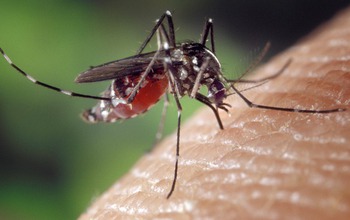All Images
Research News
Disappearing mosquitoes leave clues about basic ecology

A black rat in a Palmyra Atoll, before the invasive mammal's disappearance from the island.
Credit: Hillary Young
Download the high-resolution JPG version of the image. (3.3 MB)
Use your mouse to right-click (Mac users may need to Ctrl-click) the link above and choose the option that will save the file or target to your computer.

The Asian tiger mosquito, Aedes albopictus, will normally feed on non-mammalian species, and thousands of sea birds nest at Palmyra Atoll. However, the mosquitoes went extinct from the atoll when the rats disappeared, indicating that they had grown specialized to feed on mammals.
Credit: James Gathany, CDC
Download the high-resolution version of the image. (10.4 MB)
Use your mouse to right-click (Mac users may need to Ctrl-click) the link above and choose the option that will save the file or target to your computer.

Graduate student Ana Miller-ter Kuile walks between sampling sites at Palmyra Atoll during a research trip. Palmyra Atoll is a remote location in the Pacific, and rats likely reached it on ships during World War II.
Credit: Michelle Lee, UCSB
Download the high-resolution JPG version of the image. (1.9 MB)
Use your mouse to right-click (Mac users may need to Ctrl-click) the link above and choose the option that will save the file or target to your computer.

A rat in a Pisonia tree at Palmyra Atoll.
Credit: Hillary Young
Download the high-resolution JPG version of the image. (3.4 MB)
Use your mouse to right-click (Mac users may need to Ctrl-click) the link above and choose the option that will save the file or target to your computer.


